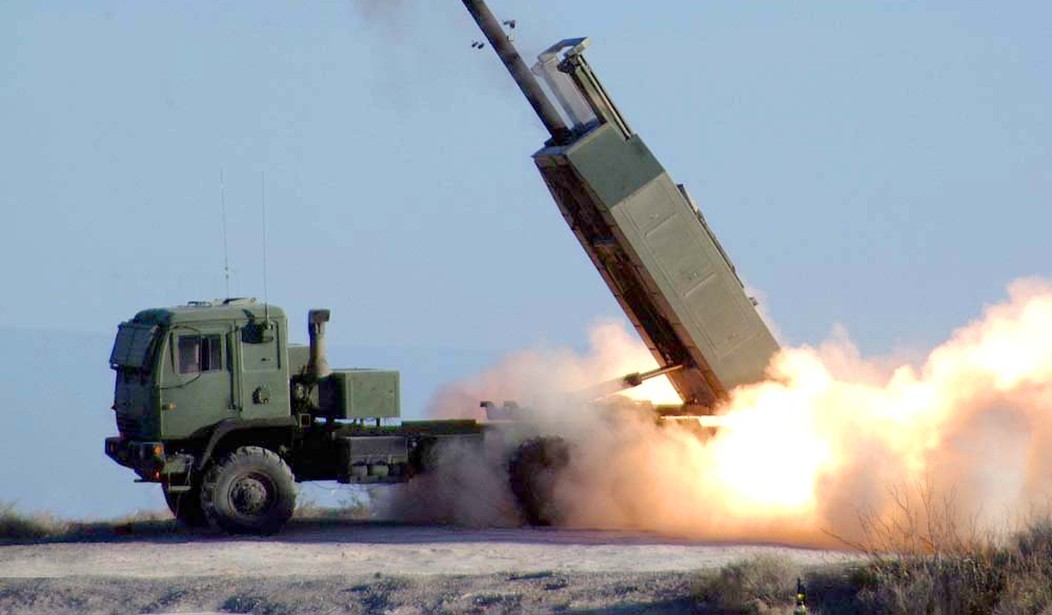The Pentagon secretly modified the deadly HIMARS rocket launchers sent to Ukraine over the last few months, according to a report in today’s Wall Street Journal.
Ukraine’s partially neutered High-Mobility Artillery Rocket System (HIMARS) are unable to fire missiles with ranges longer than about 48 miles, thanks to “a unique feature” that the Pentagon never revealed before Monday.
WSJ says that today’s revelation shows how Washington has tried to “balance its support for Ukraine’s forces against the risk of escalation with Moscow.”
While I disagree with the White House’s decision (naturally), I do appreciate the conundrum.
If Ukraine were to somehow get their hands on longer-ranged rockets, an unmodified HIMARS system might be able to fire them with deadly precision at targets deep inside Russia. How Moscow might respond to such attacks keeps military planners up at night. With the secret modifications announced today by the Pentagon, that’s impossible for HIMARS to accomplish.
Was it a hardware modification? Software? Only the Pentagon knows, and they aren’t saying.
HIMARS is just the launcher. It can fire various missiles with ranges from as short as 6 miles for practice rounds (M28 variants), about 48 miles for the standard GMLRS rockets that Ukraine has received, to over 180 miles for the coveted ATACMS rocket. Ukraine has been given GMLRS rockets only.
Also on Monday, Russia reported explosions at two air force bases, both well outside even the extreme range of an ATACMS rocket:
Explosions were reported at military airfields in the Saratov and Ryazan regions of Russia earlier today. Russian state media said a fuel tanker had exploded at one airbase, causing the deaths of three people and injuring several others. At the other airfield, Ukrainian media reported that a possible drone attack had damaged two Tu-95 strategic bombers.
Damaging a couple of Tu-95s is kind of a big deal. The “Bear” bomber is the closest thing to the B-52 the Russians ever produced — similar age, similar payload, similar range, built in similar numbers.
There are believed to be only 55 Bears still in service. Losing two, even temporarily, hurts at least a little — particularly since they’ve been used by Moscow for stand-off cruise missile strikes against Ukraine’s civilian infrastructure.
Exactly how Kyiv reached out and touched two airbases 350 miles or more away remains a mystery. Drones were almost certainly involved, which doesn’t speak well for Russian air defenses. The UA has been shooting down between 80-90% of Russian drones and cruise missiles.
But for the paranoid Kremlin type — is there any other kind? — the actual range of those nasty American rockets the UA keeps firing might be much greater than its published range. Maybe those tricksy Ukrainians used a super-secret American missile.
Is anyone in the Kremlin really that paranoid? Maybe, maybe not. But it might be wise for folks in Washington to behave as though people in the Kremlin actually are that paranoid.
As Kyiv devises ways to hurt Russia in places previously thought to be safe, Washington ought to make it known that our gear didn’t have anything to do with Kyiv’s increased reach.
Today’s revelation to the WSJ was likely too early to have been in response to the explosions in Saratov and Ryazan — but this also isn’t the first time the UA has pulled off unexpected tricks like these.
On the other hand, if I’m some smart engineer in the UA, I might ask permission to tinker with one of those HIMARS systems. What can be modified can sometimes be de-modified…
Recommended: Swiss Prepare to Spend the Winter Bored, Cold, and Trapped at Home










Join the conversation as a VIP Member